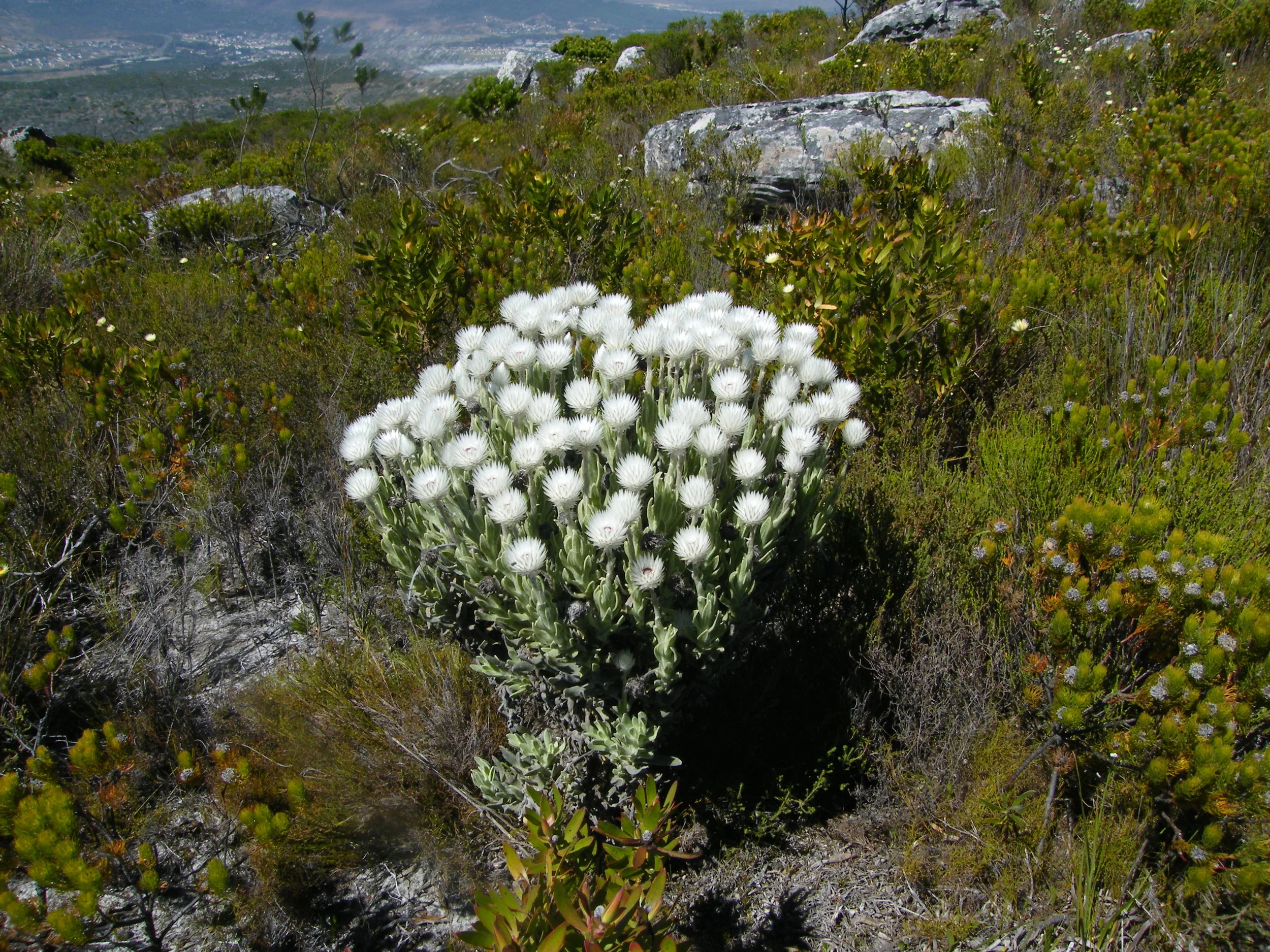Photo by Andrew massyn licensed under CC BY-SA 3.0
Common names are a funny thing. Depending on the region, the use, and the culture, one plant can take on many names. In other situations, many different plants can take on a single name. Though it isn't always obvious to those unfamiliar with them, the use of scientific names alleviates these issues by standardizing the naming of things so that anyone, regardless of where they are, knows what they are referring to. That being said, sometimes common names can be entertaining.
Take for instance, plants in the genus Syncarpha. These stunning members of the family Asteraceae are endemic to the fynbos region of the Eastern and Western Cape of South Africa. In appearance they are impossible to miss. In growth habit they have been described as "woody shrublets," forming dense clusters of woody stems covered in a coat of woolly hairs. Sitting atop their meter-high stems are the flower heads.
Each flower head consists of rings of colorful paper-like bracts surrounding a dense cluster of disk flowers. The flowering period of the various species can last for weeks and spans from October, well into January. Numerous beetles can be observed visiting the flowers and often times mating as they feed on pollen. Some of the beetles can be hard to spot as they camouflage quite well atop the central disk. Some authors feel that such beetles are the main pollinators for many species within this genus.
Photo by JonRichfield licensed under CC BY-SA 3.0
Their mesmerizing floral displays are where their English common name of "everlasting" comes from. Due to the fact that they maintain their shape and color for a long time after being cut and dried, various Syncarpha species have been used quite a bit in the cut flower industry. A name that suggests everlasting longevity stands in stark contrast to their other common name.
These plants are referred to as "sewejaartjie" in Afrikaans, which roughly translates to "seven years little." Why would these plants be referred to as everlasting by some and relatively ephemeral by others? It turns out, sewejaartjie is a name that has more to do with their ecology than it does their use in the floral industry.
As a whole, the 29 described species of Syncarpha are considered fire ephemerals. The fynbos is known for its fire regime and the plants that call this region home have evolved in response to this fact. Syncarpha are no exception. They flower regularly and produce copious amounts of seed but rarely live for more than 7 years after germination. Also, they do not compete well with any vegetation that is capable of shading them out.
Photo by Andrew massyn licensed under CC BY-SA 3.0
Instead, Syncarpha invest heavily in seed banking. Seeds can lie dormant in the soil for many years until fires clear the landscape of competing vegetation and release valuable nutrients into the soil. Only then will the seeds germinate. As such, the mature plants don't bother trying to survive intense ground fires. They burn up along with their neighbors, leaving plenty of seed to usher in the next generation.
Research has shown that its not the heat so much as the smoke that breaks seed dormancy in these plants. In fact, numerous experiments using liquid smoke have demonstrated that the seeds are likely triggered by some bio-active chemical within the smoke itself.
So, there you have it. Roughly 29 plants with two common names, each referring back to an interesting aspect of the biology of these plants. Despite their familiarity and relative ease of committing to memory, the common names of various species only get us so far. That's not to say we should abolish the use of common names altogether. Learning about any plant should be an all encompassing endeavor provided you know which plant you are referring to.


